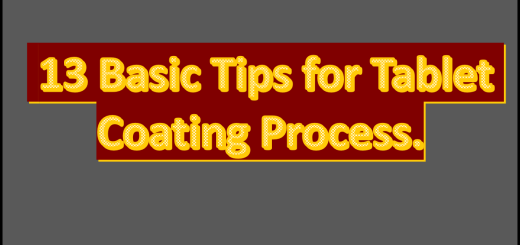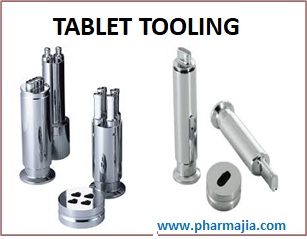50 frequently asked Interview Questions
This article contains frequently asked interview questions for fresh pharmacy graduates :
Frequently asked interview questions on Oral Solid Dosages (OSD) forms :
- What is an Oral Solid Dosage (OSD) form?
A dosage form taken by mouth in solid form, such as tablets, capsules, and powders. - What are the common types of OSD forms?
Tablets, capsules, granules, powders, and lozenges. - Definition of Tablets ? – Tablets are solid dosage forms containing one or more active pharmaceutical ingredients (APIs) with or without excipients, compressed or molded into a defined shape.
- Definition of Capsule ? – Capsules are solid dosage forms in which the drug is enclosed within a hard or soft soluble container or shell, usually made of gelatin.
- Definition of Lozenges? Lozenges are solid dosage forms intended to dissolve slowly in the mouth, releasing the drug locally in the oral cavity or throat.
- What are the key steps in tablet manufacturing?
Weighing, blending, granulation, drying, milling, compression, and coating. - What is granulation?
A process of particle size enlargement to improve flow and compressibility. - What are the types of granulation?
Wet granulation, dry granulation, and direct compression. - What are excipients?
Inactive substances used to aid processing and improve stability, bioavailability, or patient acceptability. - Name common binders used in tablet formulations.
PVP, starch paste, HPMC, gelatin. - What is the role of a disintegrant?
To help the tablet break apart in to small pieces - Give examples of disintegrants.
Sodium starch glycolate, croscarmellose sodium, crospovidone. - What is the function of lubricants?
To reduce friction during tablet compression and ejection. - What is direct compression?
A method where powders are compressed directly into tablets without granulation. - What is slugging in dry granulation?
Compressing powder into large tablets (slugs) and then milling them into granules. - What is roller compaction?
A dry granulation technique using rollers to compact powder into ribbons/Flex. - Why is drying important in wet granulation?
To remove moisture and prevent microbial growth or degradation. - What equipment is used for drying of granules?
Fluid bed dryer, tray dryer, vacuum dryer. - What is the purpose of hardness testing?
To measure the mechanical strength of tablets. - What is friability?
The tendency of a tablet to crumble or break under stress. - What is the acceptable friability limit?
Not more than 1% weight loss. - What is disintegration time?
The time it takes for a tablet to break down into smaller particles. - What is dissolution testing?
A test to measure the rate and extent of drug release from a dosage form. - What is preformulation?
The study of physical and chemical properties of a drug before formulation. - What is polymorphism?
The ability of a substance to exist in more than one crystalline form. - Why is particle size important in OSD?
It affects flowability, compressibility, and dissolution rate. - What is hygroscopicity?
The ability of a substance to absorb moisture from the environment. - What is a stability study?
A study to determine how the quality of a drug varies with time under environmental conditions. - What are the types of tablet coatings?
Sugar coating, film coating, and enteric coating. - What is the purpose of enteric coating?
To protect the drug from stomach acid or to protect the stomach from the drug. - What is film coating?
A thin polymer-based layer applied to tablets for protection and appearance. - What are common coating defects?
Peeling, picking, orange peel, bridging, mottling. - What is blister packaging?
A type of packaging where tablets are sealed in cavities between a plastic and aluminum foil. - What is a Master Formula Record (MFR)?
A document that outlines the manufacturing process and specifications for a product. - What is a Batch Manufacturing Record (BMR)?
A record of the actual production of a specific batch. - What is GMP?
Good Manufacturing Practices – guidelines to ensure product quality and safety. - What is validation?
Documented evidence that a process consistently produces a desired result. - What is process validation?
A study to confirm that a manufacturing process consistently produces quality products. - What causes capping in tablets?
Air entrapment, poor binding, or worn tooling. - What causes sticking during compression?
Moisture, inadequate lubrication, or poor formulation. - What is lamination in tablets?
Splitting of tablets into layers due to compression issues. - How can flow properties of powders be improved?
By granulation, adding glidants like talc or colloidal silica. - What is weight variation test?
A test to ensure uniformity of tablet weight. - Name equipment used for tablet compression.
Single punch machine, rotary tablet press. - What is a fluid bed processor?
Used for drying, granulating, and coating particles. - What is a V-blender?
A type of mixer used for uniform blending of powders. - What is a sieve analysis?
A method to determine particle size distribution. - What is a dissolution apparatus?
A device used to test drug release from tablets (e.g., USP Apparatus I & II). - What is QbD (Quality by Design)?
A systematic approach to development that emphasizes product and process understanding. - What is a Design of Experiments (DoE)?
A statistical method to study the effect of multiple variables on a response. - What is a critical quality attribute (CQA)?
A property that must be controlled to ensure product quality. - What is a critical process parameter (CPP)?
A variable that can impact a CQA and must be monitored or controlled. - What is PAT (Process Analytical Technology)?
A system for designing, analyzing, and controlling manufacturing through real-time measurements. - Types of Tablets ?
- Chewable Tablets – Chewed before swallowing; often for children.
- Effervescent Tablets – Dissolve in water before administration.
- Sublingual Tablets – Placed under the tongue for rapid absorption.
- Buccal Tablets – Placed between the cheek and gum for absorption.
- Vaginal Tablets – Inserted into the vagina for local action (e.g., antifungals)
- Vaginal Tablets – Inserted into the vagina for local action (e.g., antifungals)
- Implantable Tablets – Implanted under the skin for long-term drug release.
- What is GMP and cGMP ?GMP (Good Manufacturing Practices) refers to a set of regulations, codes, and guidelines for the manufacture of drugs, medical devices, and food products. It ensures that products are consistently produced and controlled according to quality standards to minimize risks such as contamination, mix-ups, and errors.cGMP stands for Current Good Manufacturing Practices. The “current” emphasizes that companies must use up-to-date technologies and systems that comply with the latest regulations and scientific advancements.
Key Difference from GMP:
- While GMP is the general standard, cGMP reflects the latest and most current practices.
- Regulatory agencies like the FDA use “cGMP” to ensure manufacturers are not just compliant, but also continuously improving.
Key Focus Areas:
- Hygiene and cleanliness
- Controlled environments
- Proper documentation
- Trained personnel
- Quality assurance and control



